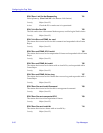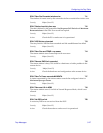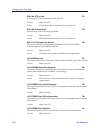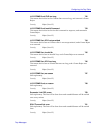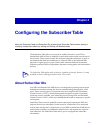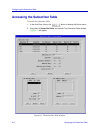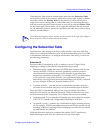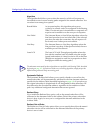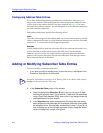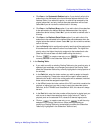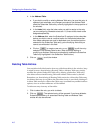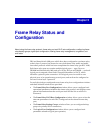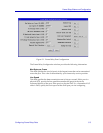
Configuring the Subscriber Table
4-4 Configuring the Subscriber Table
Algorithm
The algorithm Þeld allows you to select the means by which call requests are
forwarded to one of several routing paths assigned to the named subscriber. You
can select from among four options:
Round Robin As its name implies, this algorithm selects ports
cyclically in numeric order (as conÞgured in the Routing
Table). If a selected port is unreachable or congested, call
requests are forwarded on to the next port in sequence.
Line Failed The Alternate Route on Line Failure algorithm selects the
Þrst listed port that is not in a failed state. If the selected
port does not make the connection, the call request will
be cleared, even if other ports are available.
Line Busy The Alternate Route on Line Busy algorithm selects the
Þrst port that is not busy. If that port has failed, the next
available port will be selected.
Least LCN The Least LCN with Throughput algorithm selects the
line with the smallest load, calculated using the weight
(speed) and number of virtual circuits in use on that line.
(Weights are assigned to each line in proportion to their
throughput within the routing path.)
Systematic Redirect
The Systematic Redirect Þeld allows you to specify whether or not calls to the
named subscriber will be automatically redirected to the Þrst alternate subscriber
speciÞed in the Address Table (described beginning on page 4-6). If you select yes,
the original subscriber is skipped and all calls designated for that subscriber will
be redirected to the Þrst alternate address, regardless of the condition of either
path. Any additional conÞgured alternate addresses are ignored.
Redirect Busy
If you enable the Redirect Busy option, calls to the named subscriber will be
redirected to the alternates listed in the Address Table if the primary subscriber
device is busy. Again, be sure youÕve conÞgured the alternate addresses in the
Address Table.
Redirect Out-of-Order
The Redirect on Out-of-Order option allows you to specify that calls to the named
subscriber device will be redirected to the alternate subscribers if the primary
device is out of order.
TIP
The alternate routes used by these algorithms are speciÞed in the Routing Table, described
beginning on page 4-5; if you do not wish to use a routing algorithm, simply accept the
default setting and enter only one routing path.



